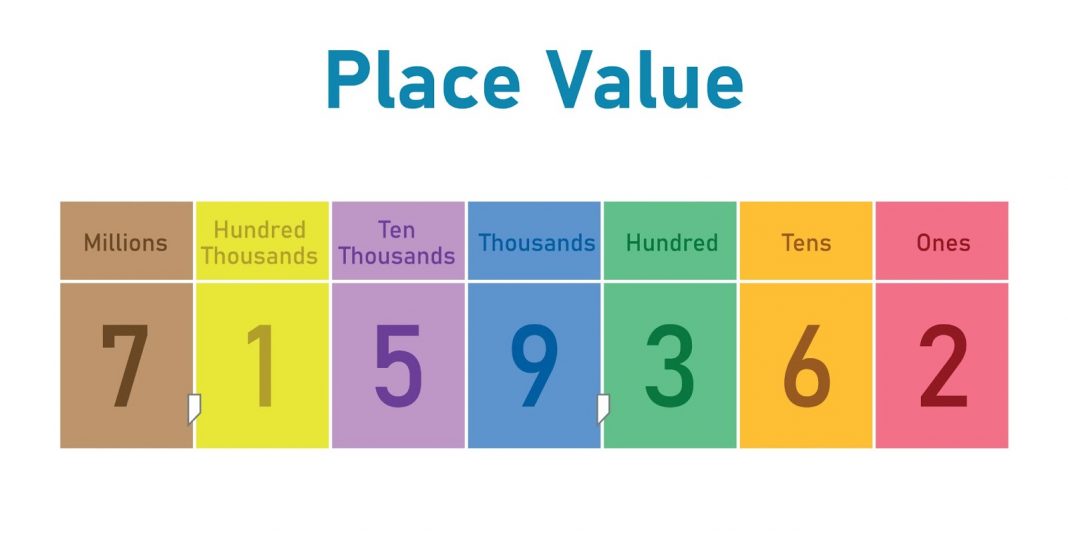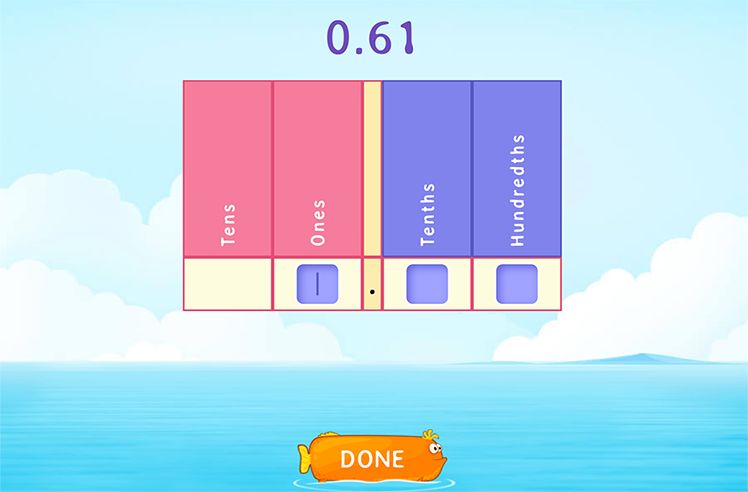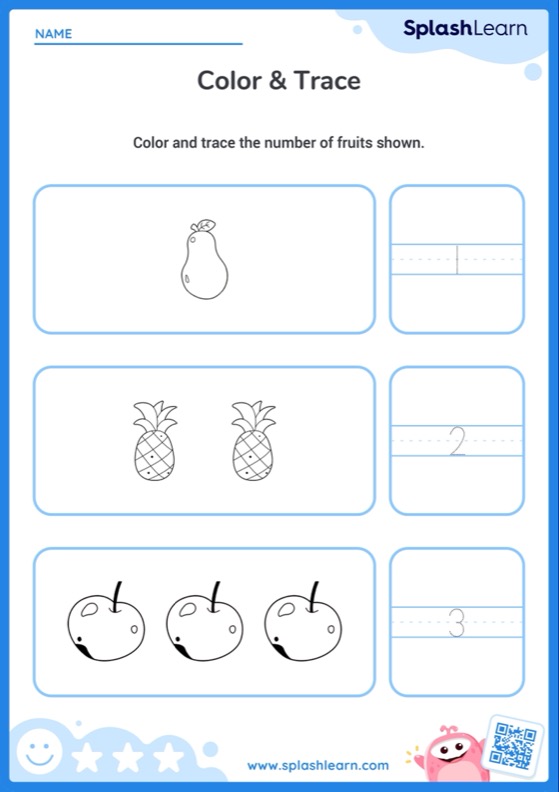Have you ever faced the challenge of explaining why the number 10 is not just a “1” next to a “0”, or why in the number 150, the “5” stands for 50 and not just 5? Understanding how to teach place value is crucial for educators and parents alike, as it forms the foundation for all higher-level math skills, from addition and subtraction to multiplication, division, and beyond. This concept is key to comprehending the size of numbers, how to decompose them, and how they relate to each other.
Math & ELA | PreK To Grade 5
Kids see fun.
You see real learning outcomes.
Watch your kids fall in love with math & reading through our scientifically designed curriculum.
Parents, try for free Teachers, use for free
In this blog, we’re diving into strategies and insights on simplifying this complex concept. Our focus will be on strategies and tips for teaching children, particularly those in the early elementary grades, ranging from kindergarten through third grade.
What is Place Value?
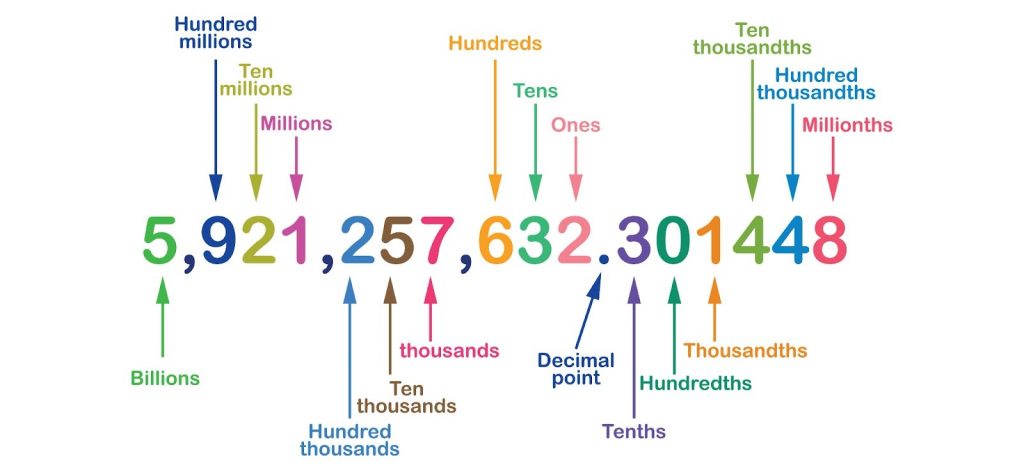
Place value is a way of showing the value of digits in a number based on their position. In the decimal number system, which is what we use every day, the position of a digit tells us how much that digit is worth.
- Position in a Number: Each spot in a number has a different value. For example, in the number 345:
The “5” is in the ones place, so it’s just worth 5.
The “4” is in the tens place, so it’s worth 40 (4 tens).
The “3” is in the hundreds place, so it’s worth 300 (3 hundred).
- Value of Digits: The value of a digit increases by ten times as we move each place to the left. So, a digit in the tens place is ten times more than the same digit in the ones place.
- Importance of Zero: Zero plays a special role in place value. It acts like a placeholder. For example, in the number 105, the zero shows no tens, helping us distinguish between one hundred-five and fifteen.
5 Importance of Place Value
For several reasons, understanding place value is essential, making it a key concept in mathematics education. Here’s why it’s so important:
- Builds Number Sense: Place value helps students grasp the size and value of numbers. It’s a strong number sense foundation, enabling learners to understand how numbers relate.
- Supports Math Operations: Whether adding, subtracting, multiplying, or dividing, place value is at the heart of these operations. It allows students to break down numbers and solve problems more easily.
- Facilitates Mental Math: With a solid grasp of place value, students can perform calculations in their heads more efficiently. This skill is crucial for quick problem-solving and estimation.
- Prepares for Higher Math: Understanding place value lays the groundwork for learning more complex mathematical concepts, including decimals, fractions, and algebra.
- Enhances Problem-Solving Skills: A deep understanding of place value enhances students’ ability to think critically and solve various mathematical problems.
How to Teach Place Value in Nine Easy Steps
1. Know When to Start
Deciding the right time to introduce place value is crucial in learning place value. Typically, this is after students have mastered counting by ones and have a basic grasp of simple addition and subtraction. This milestone is often reached around first or second grade. At this stage, children are ready to understand that numbers are made up of different parts, each with its value.
2. Introduce Skip Counting
To make explaining place value simpler, begin with skip counting. This means teaching children to count by numbers other than one, like twos, fives, and tens. Skip counting helps kids move beyond counting one by one, preparing them to understand larger numbers more easily.
Focusing on counting by tens is especially important because our number system is based on the number ten. This way, children see numbers in groups or sets, a key step in grasping place value. By practicing skip counting, students learn to view numbers in a more structured way, seeing the patterns and how numbers fit together, which is essential for learning place value.
Games can be a great way to introduce skip counting to kids. Start with these skip counting games:
3. Understanding Numbers vs. Digits
A key step in how to teach place value involves clarifying the difference between numbers and digits. Digits are the building blocks of our number system, consisting of the ten symbols from 0 to 9. When we talk about digits, we’re referring to these individual symbols. However, when digits come together, they form numbers based on their arrangement.
For instance, the digit “1” on its own represents the number one, and “7” represents the number seven. But when we combine them to “17,” they collectively represent 17. This distinction is crucial for the place value concept because it shows how the position of each digit affects the overall value of the number. Demonstrating this with various examples, like how “3” and “5” together make thirty-five, helps students grasp that numbers are composed of digits whose value changes based on their position.
4. Visualizing Place Value
- Place Value Charts: One effective method for teaching place value is to use place value charts. These charts help students see the position of each digit in a number and understand its value. For example, in the number 2,453, the chart helps illustrate that the “2” is in the thousands place, the “4” in the hundreds place, and so on.
- Base-10 Blocks: Another hands-on approach is using base-10 blocks or similar manipulatives. These blocks represent units, tens, hundreds, and thousands, allowing students to build and manipulate numbers physically. By using these blocks, students can visually and tangibly grasp how numbers are composed of different place values, enhancing their understanding of ones, tens, hundreds, etc.
Related Reading: Best Math Manipulatives To Enhance Children's Learning
5. Expanding Place Value Understanding
- Hundreds and Beyond: As students become comfortable with the basics of place value, it’s important to introduce them to larger numbers. Using the same tools and techniques, such as place value charts and base-10 blocks, you can help students visualize and understand numbers in the hundreds, thousands, and beyond.
- Comparing and Ordering Numbers: Teaching students to compare and order numbers based on place value is crucial in reinforcing the concept of magnitude. By understanding that the value of a digit changes depending on its position, students can learn to determine which of two numbers is larger or smaller. Activities that involve sorting numbers or placing them in ascending or descending order can be very effective in solidifying this understanding.
Here are some fun compare-and-order number games to get started:
6. Place Value in Different Number Systems
- Exploring Other Bases: A fascinating strategy to teach place value is by exploring number systems with bases other than 10, such as base-5 or base-8. This approach enriches students’ understanding of place value in our familiar decimal (base-10) system and broadens their mathematical perspective. Discussing how numbers are represented in these different systems can deepen students’ comprehension of place value, showing them that the concept is universal, not just limited to the base-10 system.
- Applying to Real-Life Situations: To reinforce how to teach place value, use real-life examples that students encounter daily. Money is a great tool for this, where dollars and cents can represent whole numbers and parts of a hundred. Measurements, like meters and centimeters, also offer practical applications of place value, making the concept more relatable and easier to grasp.
7. Operations Using Place Value
- Adding and Subtracting with Regrouping: One of the core strategies to teach place value involves demonstrating how it’s used in addition and subtraction, especially with regrouping. Show students how breaking down numbers into their place values can simplify these operations. For example, when adding numbers that result in a sum exceeding ten, explain how and why we carry over to the next place value, reinforcing the concept of tens and ones.
Regrouping can be a challenging topic for kids to grasp, start playing these games to understand how place value works for subtraction and addition:
- Multiplication and Division Concepts: Introduce multiplication and division by highlighting the role of place value. Explain how multiplying a number by 10 shifts its digits one place to the left, making it ten times larger, and how division by 10 does the opposite.
Play these online math games to introduce multiplication and division by highlighting the role of place value:
Related Reading: How to Teach Multiplication to Kids: 15 Fun Ways
8. Advanced Place Value Concepts
- Rounding and Estimation: Teach students to round numbers to the nearest ten, hundred, and so on using their knowledge of place value. This skill is essential for estimating answers quickly and efficiently, helping them to make educated guesses in everyday situations.
Here are some fun rounding and estimation games that you can get started with:
- Decimal Numbers: Expand students’ understanding of place value to include decimals. Explain how decimals use place value to represent parts of a whole, with tenths, hundredths, and thousandths, making the concept of fractions more tangible and understandable.
Start with these decimal place value games that will help you in understanding of place value to include decimals:
Related Reading: How to Teach Decimals: A Step-by-Step Guide
9. Application and Problem Solving
- Word Problems: Use word problems to apply place value knowledge in various contexts. This approach helps students see the practical use of what they’ve learned, making math more relevant.
- Critical Thinking: Challenge students with puzzles and complex problems that require them to use their place value understanding. These activities encourage deeper thinking and problem-solving skills, reinforcing their mathematical knowledge.
Related Reading: Fun Problem-Solving Activities for Growth Mindset
5 Hands-On Ways to Teach Place to Kids
1. Online Place Value Games
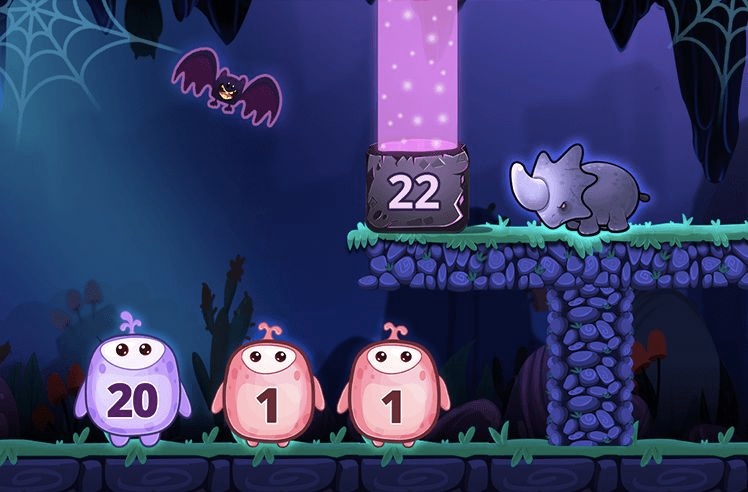
Enhance the learning experience with interactive place value online games. These digital activities are designed to make teaching and understanding place value enjoyable and accessible. Students can practice and reinforce their place value skills through these games while having fun.
2. Place Value Worksheets (Printable Worksheets)
Utilize printable worksheets designed for different skill levels. These worksheets include exercises for identifying place values, composing and decomposing numbers, and comparing numbers based on place value.
Use these printable place value worksheets in your class for free:
3. Base-10 Block Building
Base-10 block building is a hands-on way that uses physical manipulatives to help students understand the concept.
Materials Required: You’ll need base-10 blocks, which typically include units (ones), rods (tens), flats (hundreds), and cubes (thousands).
How to Do It:
- Start with a number, such as 427.
- Using the base-10 blocks, represent the number by stacking the appropriate units, rods, flats, and cubes. For 427, it would be 4 flats, 2 rods, and 7 units.
- Have students practice creating different numbers and explaining the value of each digit based on its position.
4. Place Value Bingo
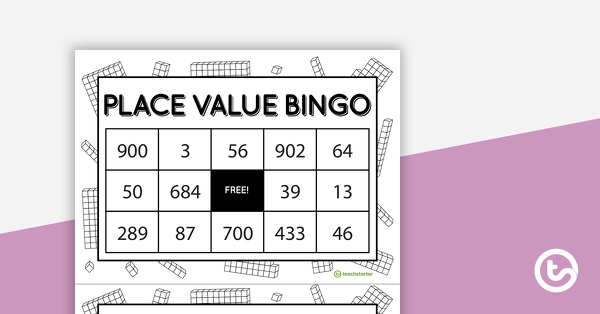
Place Value Bingo is a fun game to reinforce place value understanding through play.
Materials Required: Bingo cards with numbers, place value markers (e.g., counters or small objects), and a caller to announce numbers.
How to Do It:
- Create Bingo cards with numbers that have various place value representations, like 34, 205, or 1,468.
- Each player receives a Bingo card and some markers.
- The caller announces a number (e.g., “Three hundred twenty-one”).
- Players place a marker on the corresponding number on their Bingo card if they have it.
- The first player to get a row, column, or diagonal of markers shouts “Bingo!” and wins the game.
5. Place Value Charts
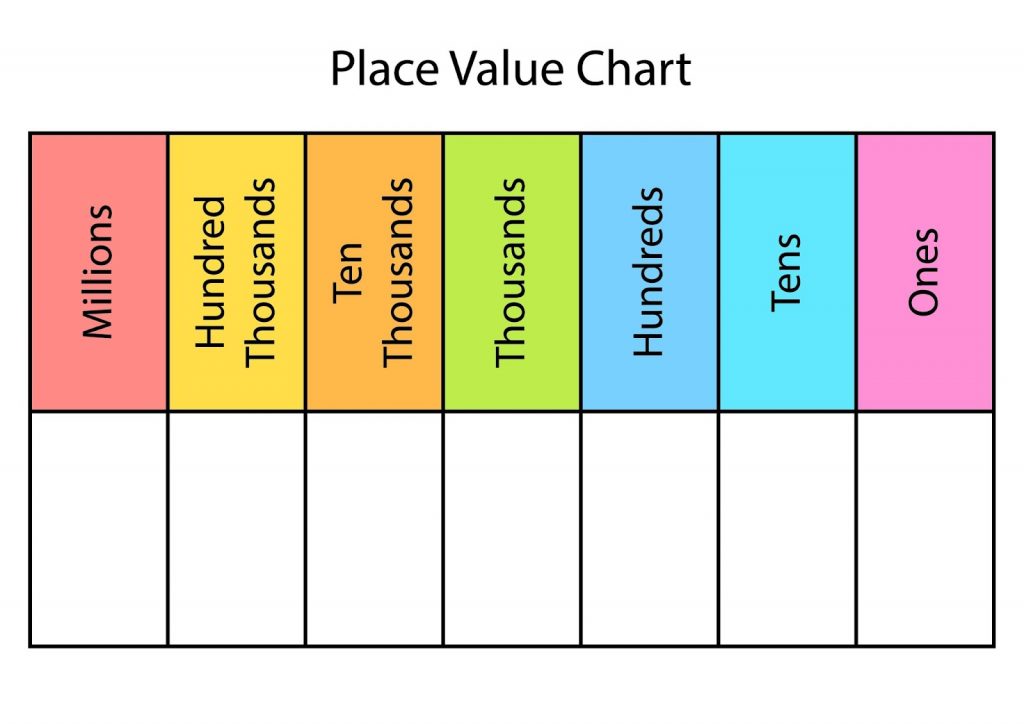
Place value charts are visual aids that represent the positions and values of digits within numbers.
Materials Required: Place value charts (can be printed or drawn), markers, and numbers to display.
How to Do It:
- Use a place value chart to visually represent numbers. For example, write the number 638 on the chart.
- Label each position (ones, tens, hundreds) and place the digits accordingly.
- Explain the value of each digit based on its position. In this case, the “6” is in the hundreds place and represents 600.
Conclusion
Teaching place value is a fundamental step in building strong math skills. By using practical strategies and engaging activities, we can help children understand the world of numbers, making math more approachable and enjoyable for them.
Related Reading: How to Teach Number Sense to Kids
Frequently Asked Questions (FAQs)
How do you explain place value to a child?
To explain place value to a child, start by showing them that each digit in a number has a special spot that gives it a value. Use simple examples like counting blocks to help them see how numbers work.
How do you introduce a place value lesson?
When introducing a place value lesson, begin by discussing the idea that numbers are made up of different parts. Use props like colored beads or drawings to represent ones, tens, and hundreds, making it hands-on and interactive.
How to teach place value in first class?
To teach place value in first grade, start with small numbers and simple examples. Use visuals like place value charts and base-10 blocks to show how numbers are built. Keep the lessons short and engaging to hold young students’ attention.

















